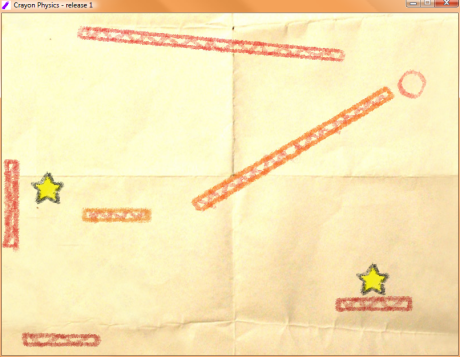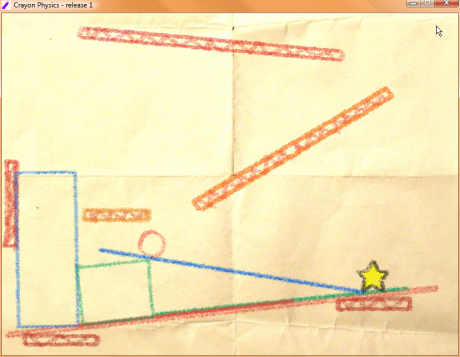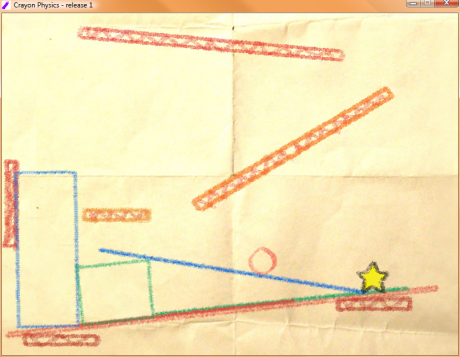Years ago I remember a computer game which involved creating a Rube Goldberg sort of contraption to complete an assigned task. I can’t remember the name of this game. It was something like The Machine… it’s been a long time.
Today I ran across a freebie called Crayon Physics. It works along the same lines as the machine game I remember, but this time you have to draw all the objects from scratch with a crayon. On top of that, all objects are affected by gravity, so everything falls if there is nothing to hold it up.
The game gives you a ball and you must touch the ball to a star (or multiple stars in some cases). Below is a screen shot of one level. By the time I snapped the picture, the ball had already rolled off the top incline and was well on its way to the bottom of the page. If the star is still on the screen, the game starts all over again with the ball in the original location.

Below is the screen after adding some rectangles and lines.

I have already “touched” the first star and the ball is headed down the incline to the second one.

The layout of the game reminds me of a brown paper bag. There was a time when a paper bag and a hand full of crayons could keep a kid busy for hours. This game brings back that magic with simple objects that must be “created” in order to solve the problem.
The free version has seven levels. The pictures above are from the final level. What’s the most creative method that can be used to solve each level? This would be a fun activity for students. It could be worked into a unit about gravity, geometry or vector algebra.
The author of the program is working on a “deluxe” version. Check out the YouTube video below.
http://www.youtube.com/watch?v=QsTqspnvAaI
I especially like the “golf club” solution.

Pingback: Crayon Physics | Technology
Pingback: crayon physics deluxe game
Pingback: crayon physics deluxe youtube
Pingback: crayon physics deluxe video